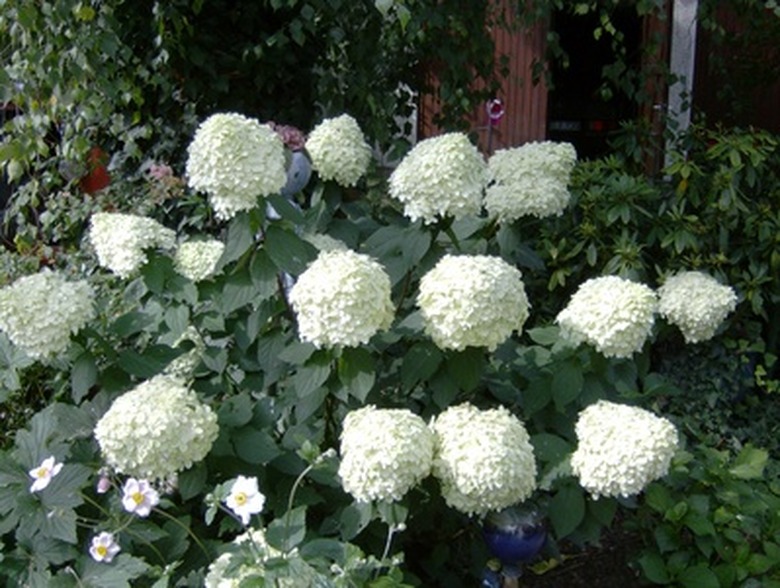How To Prune Hydrangea Trees
Things Needed
- Pruning shears
- Loppers
Hydrangea is a species of deciduous, flowering shrub of which there are many cultivars with varied characteristics, growth forms, bloom shapes, sizes and colors. According to the University of Rhode Island, each main cultivar of hydrangea has its own pruning requirements and best practices. One cultivar, Hydrangea paniculata 'Grandiflora'–also commonly know as 'Pee Gee'–has a sturdy enough branch architecture and hearty growth habit to be suited to pruning into a standard tree. Pee Gee hydrangeas bloom in white in the summer with the flowers aging into hues of pink and remaining on the plant well into fall.
Step 1
Prune your Hydrangea paniculata tree in the early spring before new, visible growth begins to emerge. This can also be done in very late winter in warmer areas, after the last hard frost.
Step 2
Cut away any spent flowers that have remained on the tree over the winter with pruning shears. Snip them off at the base of the stem and compost or discard them.
Step 3
Remove any water sprouts, suckers or unwanted new stem growth at the base of the tree. Tree-form hydrangeas can be trained to have a single trunk or multiple trunks, according to your preference. Remove any unwanted shoots at the base of the tree just at the soil line with loppers. Snip off any small sprouts from the established trunks as well, if necessary. Chip and compost or discard the cuttings.
Step 4
Inspect the canopy branches, removing any damage and thinning out up to 1/3 of the oldest branches to make way for new more vigorous and blooming wood. Sever the branches down to the parent trunk and work evenly throughout the canopy for a balanced, natural looking result. If you follow this approach annually, there will be an entirely new set of blooming branches every three years.
Step 5
Shape the canopy as desired by trimming the underside or lower skirt of the tree canopy to an even, level line or a more natural and undulating edge. Raise the canopy up by trimming more foliage. Place cuts on the branch just 1/4-inch above a leaf node or bud to encourage new branching and abundant blooms.
